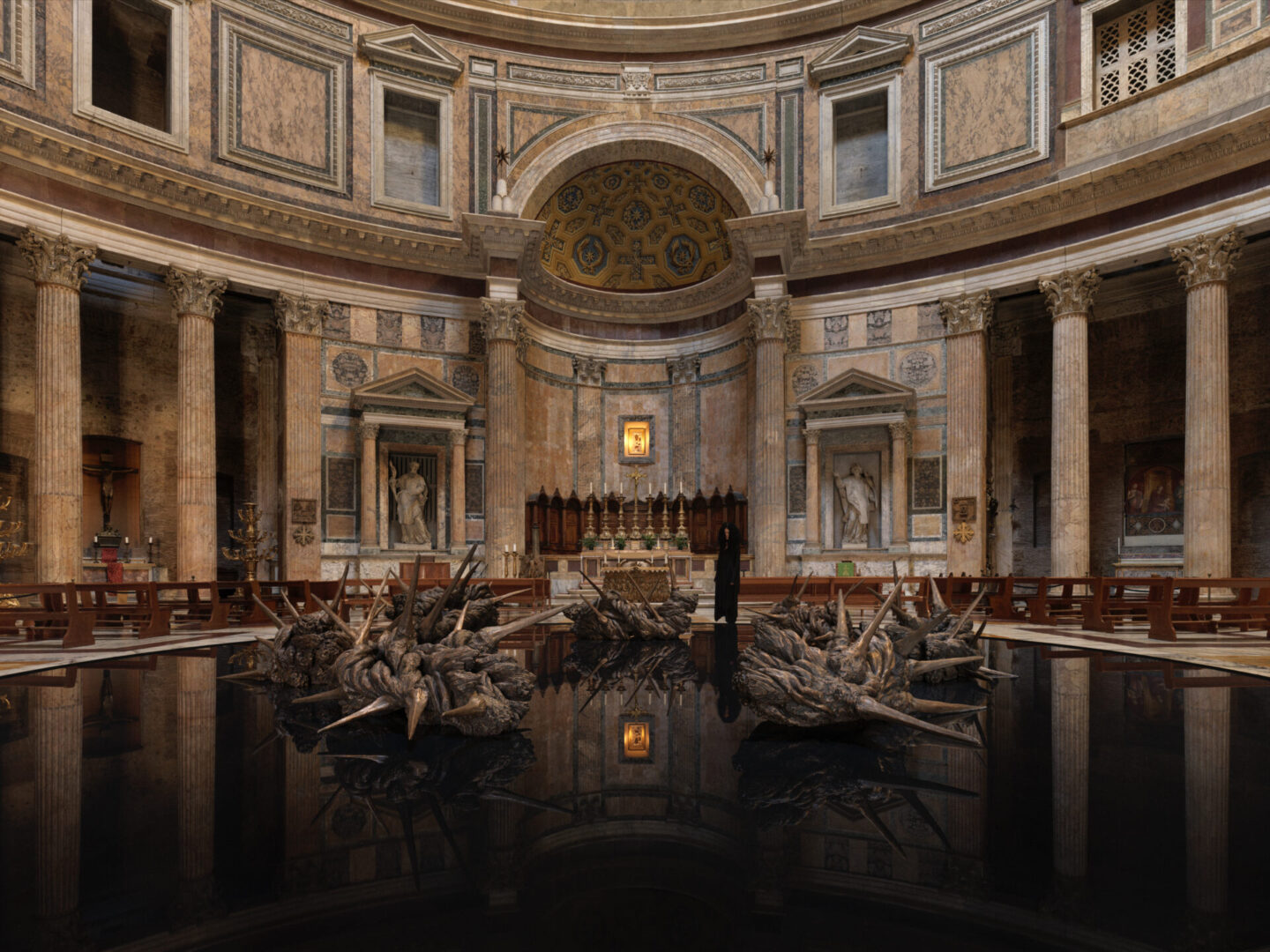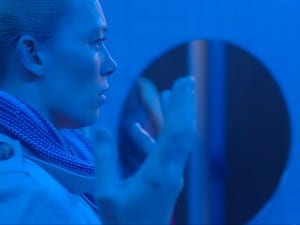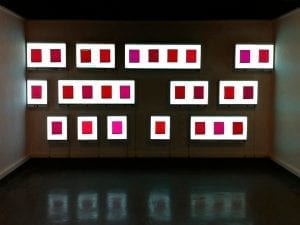The Pantheon stands among Rome’s most iconic architectural marvels. Though its origins trace back to Marcus Agrippa in 27 BC, the building we see today was reconstructed under Emperor Hadrian between 118 and 125 AD. Originally a temple to the Roman gods, it was consecrated as a Christian church in 609 AD. Its soaring dome, majestic columns, and luminous oculus continue to captivate visitors from across the globe, making the Pantheon both a sacred space and an enduring symbol of the city.
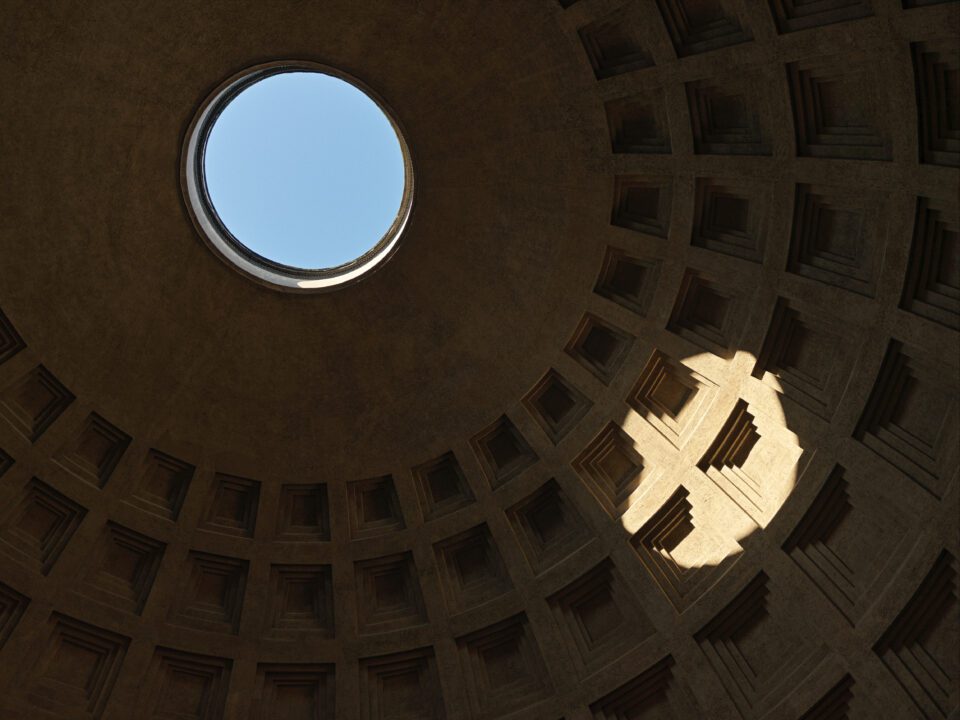
In September, the Pantheon hosted Austrian sculptor Helga Vockenhuber’s (b. 1963) monumental installation, CORONA GLORIAE, as part of the Holy Jubilee Year 2025 celebrations – an event which happens once every quarter-century. Seven larger-than-life bronze sculptures – fragments of a broken crown of thorns – explored themes of pain, redemption and hope within the sacred space. A version of the work was first presented at the Basilica of San Giorgio Maggiore in 2023, coinciding with the Venice Biennale. For the Pantheon, the installation was reimagined in site-specific dialogue with its architecture.
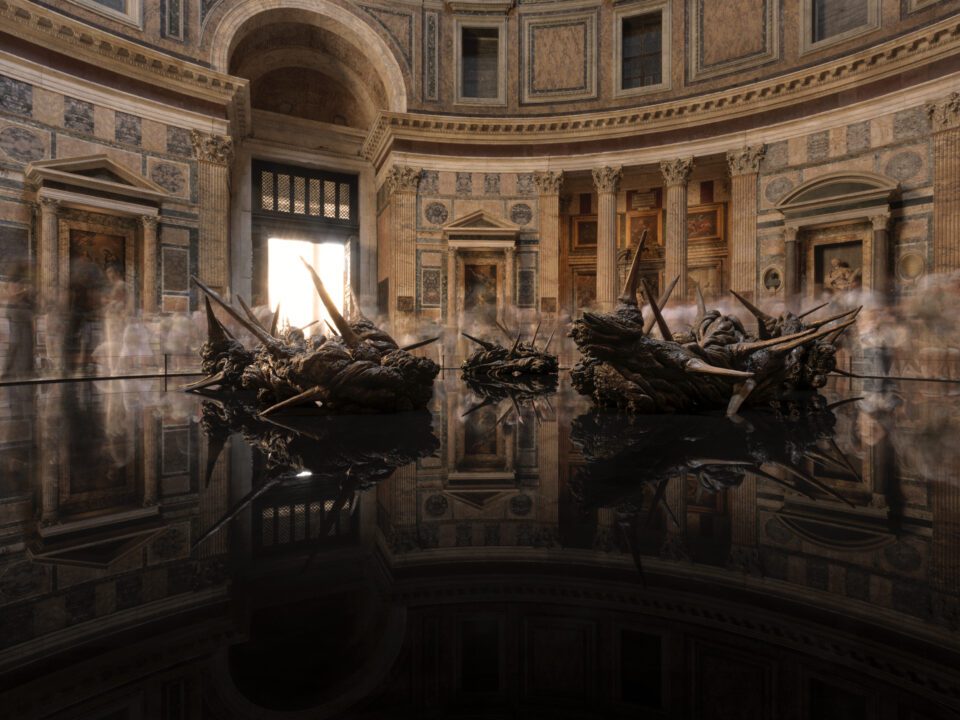
For CORONA GLORIAE, Vockenhuber, a contemporary artist recognised for her engagement with spirituality and world religions, draws inspiration from one of Christianity’s holiest relics: the crown of thorns. The work, curated by Don Umberto Bordoni and Prof. Giuseppe Cordoni, was placed directly beneath the Pantheon’s oculus, creating an immediate focal point that commanded attention. It served as a poignant reminder of the Passion, as well as of the sacrifices of the Martyrs to whom the Basilica is dedicated. Moreover, it invited viewers to reflect upon broader, universal themes of endurance and belief.
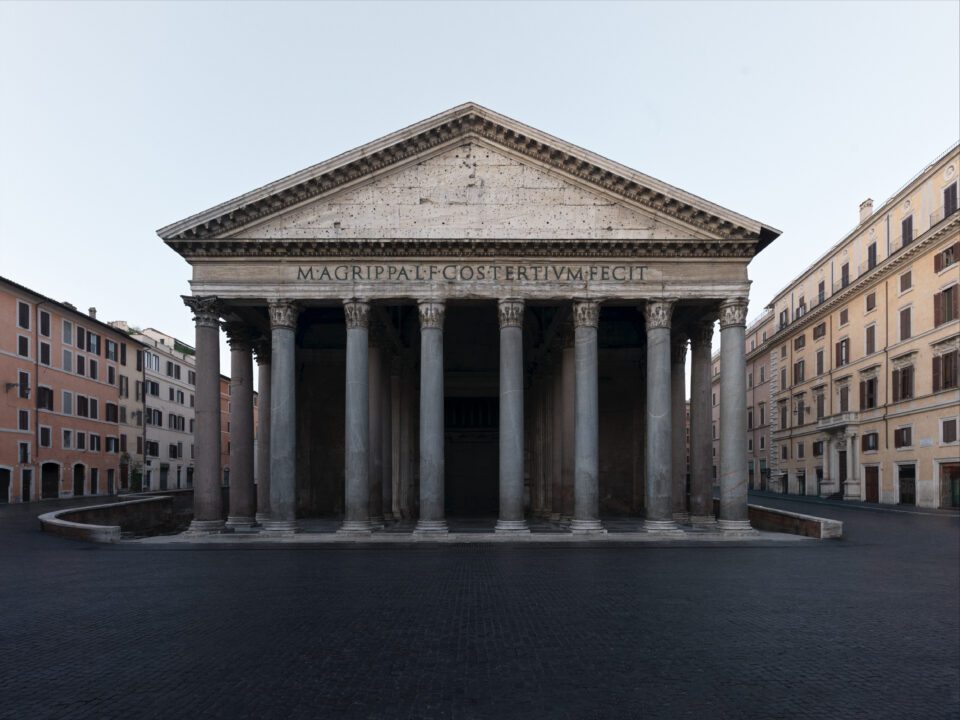
The imagery was strikingly dark. Twisted, pointed bronzes hovered atop a jet-black pool, as if suspended over an abyss. Reflections of the forms, along with the architecture above, rippled across the water, repeating infinitely. Every angle revealed a new interplay of shadow and light. Here, Vockenhuber staged what she calls the “drama of human existence,” a meditation on suffering, fragility and resilience. Yet there is always hope: “The infernal circle of evil is shattered; the crown is broken into seven fragments … The pain is no longer hermetically sealed, but open, shared, so much so that it can be traversed.” In this fragile balance – of darkness and reflection, tension and stillness – the installation transformed the Pantheon into a stage for contemplation. CORONA GLORIAE was a powerful addition to an already-iconic building, and a striking example of how contemporary sculpture can communicate stories across time and space.
CORONA GLORIAE was on view at the Pantheon, Rome, until 16 September.
Image Credits: Ägidius Vockenhuber.


